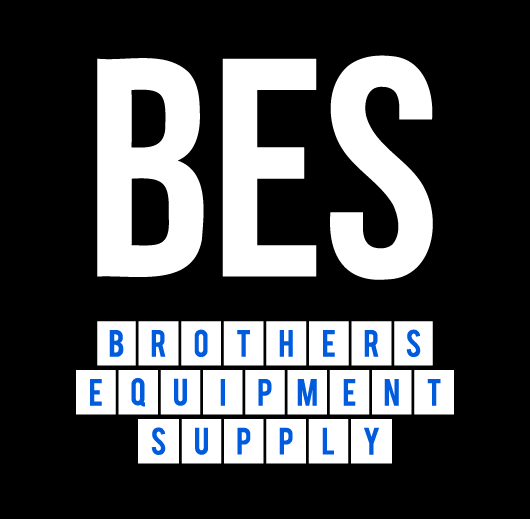
Need A Commercial Dehumidifier? Read This Before Buying
Need A Commercial Dehumidifier? Read This Before Buying
By: Brothers Equipment And Supply
If you’re worried that your domestic dehumidifier won’t be able to handle the job and thinking that you might need a commercial dehumidifier or an industrial dehumidifier, you’ve come to the right spot.
Brothers got you covered!
Because commercial dehumidifiers are more durable, strong, and robust.
Without question, you’ll notice improved air quality in your room when you use commercial dehumidifiers.
Below, we will talk about the most-know details about commercial dehumidifiers.
Let’s get right into it.
Commercial Dehumidifier FAQs:
- What is the difference between a residential dehumidifier, commercial dehumidifier, and industrial dehumidifier?
- How can a dehumidifier help me after a leak or flood?
- Can I use a commercial dehumidifier in my home?
- How much water can a commercial dehumidifier remove?
- How can I calculate how many cubic square feet there are in my room?
- What is my recommended ACH?
- How can I determine the recommended CFM?
- What is a desiccant dehumidifier?
- What temperatures can these units operate in?
- Is there a commercial dehumidifier that will fit in my crawlspace?
- Is there a commercial dehumidifier I can use in my indoor pool and spa area?
- Are commercial dehumidifiers noisy?
What is the difference between a residential dehumidifier, commercial dehumidifier, and industrial dehumidifier?

Residential, commercial, and industrial dehumidifiers are the three main classifications. Residential units are more affordable, quieter, and smaller.
As they don’t appear industrial, they can be simply positioned in a living space without detracting from the décor.
Commercial and industrial dehumidifiers are stronger, more long-lasting, and often more expensive than domestic models. They can be used interchangeably. Whereas household units are typically composed of lightweight plastic that can be less robust, these dehumidifiers are typically built of steel or strong-duty plastic.
Commercial dehumidifiers are an investment because they are made of stronger materials and last longer than domestic models.
Poor insulation and a lack of a central air system frequently cause extreme temperatures, high humidity, mould, and mildew.
Commercial dehumidifiers can assist and keep a warehouse’s machinery safe from electrical outages and product damage while preserving a comfortable working environment for staff. By making this investment, you can protect priceless goods in a variety of locations, including server rooms, electrical switch rooms, basements, garages, and more!
How can a commercial dehumidifier help me after a leak or flood?
In the event of a leak or flood, you must move fast. The initial 24 to 48 hours are crucial in halting the growth of germs and mould. It may take too long to use a fan to dry the remaining moisture after the water has been removed from the region.
A commercial or industrial dehumidifier can be useful in this situation. They can more rapidly and effectively remove deeply ingrained moisture from wood flooring, wall frames, and other hard surfaces.
They won’t just hasten the drying process, they’ll also stop mould from growing and stop a musty odour from forming. Keep the windows and doors closed throughout this procedure so that the dehumidifier can function at its best.
The majority of commercial and industrial units feature wheels, making it simple to transfer them from one location to another and remove moisture as needed.
Commercial and industrial dehumidifiers are an excellent investment if you reside in a flood zone because they will help you save time and money after a flood.
Can I use a commercial dehumidifier in my home?
Absolutely, provided you are okay with their imposing exteriors. Depending on how much square footage you wish to dehumidify, commercial and industrial units can both be used interchangeably to eliminate high levels of moisture inside the home.
Large residential spaces in humid conditions benefit from the use of commercial and industrial dehumidifiers.
Crawlspaces, pool areas, basements, and garages all have units made specifically for certain locations in your house.
Commercial and industrial dehumidifiers will lessen mould growth, stop window or pipe condensation, and get rid of musty odours.
It’s crucial to know the size of the area you’re trying to dry out, much like with home dehumidifiers. This will enable you to pick the ideal device for your requirements.
Check the product description if you intend to use one of these units in your home as some of the industrial and commercial models need unique voltage or outlets.
How much water will a commercial or industrial dehumidifier remove?
It depends on the amount of pints removed per day and the area. While most residential dehumidifiers can only take up to 70 pints, commercial and industrial machines can remove up to 160 pints.
Some industrial dehumidifiers have a removal capacity of only 50 pints, which is comparable to a household unit, but they are more durable and have a longer lifespan.
When buying a dehumidifier, make sure the pint size and square foot coverage meet your requirements. Commercial and industrial dehumidifiers may handle a range of square footage.
How can I calculate how many cubic square feet there are in my room?
Measure the room’s length and width with a tape measure or ruler. To get the square footage of the room, multiply the length and width values.
You need to multiply the square footage by the height of the room to get the cubic feet square footage.
What is my recommended ACH?
The term “ACH” stands for air changes per hour and indicates how frequently the air should go through the dehumidifier every hour.
This will enable you to calculate the airflow required to dehumidify the space effectively. The suggestions based on humidity levels are as follows:
- Extremely Wet
When the humidity is between 90% and 100%, there may be standing water or big puddles. The advised ACH is 6.
- Wet
Between 80% and 90% of the air is humid, and the space has noticeable stains, moist spots, mould, and mildew. The advised ACH is 5.
- Very Damp
The room has a mildew odour, visible dampness on the walls or floor, and humidity levels between 70% and 80%. The advised ACH is 4.
- Damp
When the humidity is between 60% and 70%, the area feels moist and has a musty smell. Characteristic of crawlspaces and basements. The advised ACH is 3.
How can I determine the recommended CFM?
To dry the air, desiccant dehumidifiers use naturally absorbent substances like silica gel.
Silica gel may be something you’re already familiar with from the sachets you often receive in new shoes and other goods. In order to give the same moisture absorption qualities, these packets are placed with these things.
What is a desiccant dehumidifier?
Silica gel and other naturally absorbent materials are used by desiccant dehumidifiers to dry the air. You might be familiar with silica gel because of the packets you sometimes see in new shoes and other goods.
To give the same moisture-absorbing qualities as these things, these packets are placed with them.
Air is pulled into the device and moves across a silica gel wheel that is revolving. It pulls moisture from the air and absorbs it into the gel wheel. Reactivation air is a little amount of heated air that returns through the wheel.
The gel wheel is reactivated when any moisture in the wheel is released into this air stream. Reactivation air should be vented outside of the area being dried out because it will leave the unit as warm, humid air.
Desiccant dehumidifiers are perfect for areas that require extensive drying, such as hardwood floors, in cooler climes, low humidity conditions, or both.
These units can function at below-freezing temperatures because they don’t produce any water and they don’t need a compressor. These devices are typically significantly quieter than other industrial or commercial dehumidifiers.
What temperatures can these units operate in?
Dehumidifiers used in businesses and industries can function in temperatures as low as 33°F. Desiccant devices can function in temperatures below zero.
Is there a commercial dehumidifier that will fit in my crawlspace?
Crawlspaces and basements in particular sometimes have higher humidity levels than other indoor spaces.
Water will condense on surfaces like pipes, windows, and walls if there is too much moisture in the air.
Yet, occasionally the water condenses above or behind barriers, out of sight. A musty odour is frequently a dead giveaway that there is too much moisture in the air.
A crawlspace dehumidifier might assist in resolving the problem if you notice dampness or have this odour. These gadgets are strong, long-lasting, and simple to install.
Is there a commercial dehumidifier I can use in my indoor pool and spa area?
The heated water in the pool automatically humidifies the indoor pool and spa rooms. When humidity levels are too high, mould, poor air quality, and structural damage will emerge.
A dehumidifier will improve the environment and safeguard the infrastructure.
Are commercial dehumidifiers noisy?
Commercial and industrial dehumidifiers produce more noise than residential units do.
Thankfully, these dehumidifiers are typically installed in locations like warehouses or basements where noise isn’t an issue.
Check the product description to see whether it includes the dBa rating; this will give you a better idea of the expected noise level.
If you have any questions about our article “Need A Commercial Dehumidifier? Read This Before Buying” or in need of water damage equipment and commercial dehumidifiers in Canada or the USA, feel free to call 1-416-912-2205 or chat with us in near real-time on social media.
